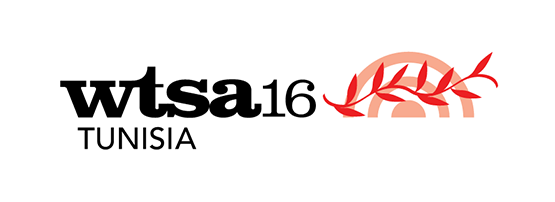
The International Telecommunications Union’s (ITU) quadrennial World Telecommunication Standardization Assembly 2016 (WTSA-16) was held in Hammamet, Tunisia, from 25 October to 3 November.
The ITU is the United Nation’s specialized agency for telecommunications. The Assembly is the major conference for the technical standards division of the ITU (ITU-T sector). It is partly a venue for approving new standards, but primarily is a meeting to discuss objectives and working methods for the next four years.
The standards development work is done by Sector Members (industry-led) and representatives from governments working together in Study Groups. The WTSA determines the working methods, mandates, and work areas for the Study Groups. There are 11 Study Groups in the ITU-T sector.
The 2016 Assembly considered more than 200 proposals and created 400-plus working documents in an 11-day period. The outcomes included 16 new Resolutions, 31 revised Resolutions, and 5 new Recommendations. Six existing Resolutions were suppressed.
Below are some of the takeaways from the meeting related to the Internet number community.
Focus on Digital Object Architecture
Some proposals considered at the meeting were very contentious. In particular, the ones where a number of Member States pushed to direct the Study Groups to focus their standards work around a technology called Digital Object Architecture (DOA). DOA is an access control schema for digital objects (assigned to physical or logical assets in a network) and was put forward as a solution across a range of challenges.
Proposals were submitted to use DOA as the basis for work on counterfeit hardware, cybersecurity, privacy, e-health and the Internet of Things (IoT). Proposals referenced the DOA either directly or obliquely, suggesting it as a silver bullet that can resolve Internet problems by providing persistent identity management. Essentially DOA would be used as a permission system to control which devices can access which services.
Many participants expressed concern that DOA’s efficiency and security is untested at Internet scale, that there are questions over the status of its intellectual property, that its governance structures are tightly held and opaque, and that there are few existing deployments that actually address the challenges it is being claimed as a solution for.
Policy, Regulation, and Economics
Although the ITU-T is a technical standards organization, the mandate for Study Group 3 was expanded to include policy, regulatory, and economic issues related to the Internet. Ways to control and govern applications such as Over the Top (OTT) telecommunications, cloud computing, privacy and identification, as well as mobile money, were all targeted for future attention by the Study Groups.
An existing Recommendation that provides a framework of charging and accounting principles was expanded to advise carriers how to introduce tiered charging regimes with specific fees for VoIP traffic, content delivery networks (CDNs), or for QoS and MPLS traffic.
Another new Recommendation advises that governments should introduce regulations covering regional and/or national Internet Exchange Points (IXPs) as a way to reduce the cost of international transit.
Numbering, Naming, Addressing, and Identification were also contentious topics. APNIC was able to participate in the editing of Resolution 64 on IPv6, which unfortunately still claims some countries feel the RIR system fails to meet the needs of developing countries. The ITU, however, seems to be moving to non-IP numbering schemas for a Future Packet-Based Network. One proposed Resolution called for the development of a new addressing system that would facilitate a migration away from the Internet but it did not reach consensus.
The future direction of work agreed at the WTSA will be to develop new addressing and identification schemas, which aim to augment and ultimately replace IP addresses, particularly in IoT applications. DOA, with its persistent identifier capabilities, is the principal vehicle suggested by the WTSA to achieve this.
Attempts to exert greater governmental control over the Domain Name System (DNS) at the UN level did not reach agreement and no change was recorded for the Resolution regarding Internationalized Domain Names and ccTLDs. A proposal from the African region attempted to expand the scope of the ITU’s position on ccTLDs to include geographical gTLDs, with the stated intention of reaching a treaty-level agreement in the future. This proposal was hotly debated but did not pass.
Earlier this year a new Expert Group was formed by the ITU to consider the need for a review of the International Telecommunications Regulations (ITRs). This would result in another World Conference on International Telecommunications (WCIT), a highly contentious treaty conference previously held by the ITU in 2012.
Moves were made at the WTSA to allow Study Groups to provide direct input into this process, which could have resulted in a wish list of changes required to accomplish their new application-level mandates. A compromise was reached that would allow the ITU-T sector to provide aggregated input to this group. A new WCIT could be held as early as 2020.
The views expressed by the authors of this blog are their own and do not necessarily reflect the views of APNIC. Please note a Code of Conduct applies to this blog.
